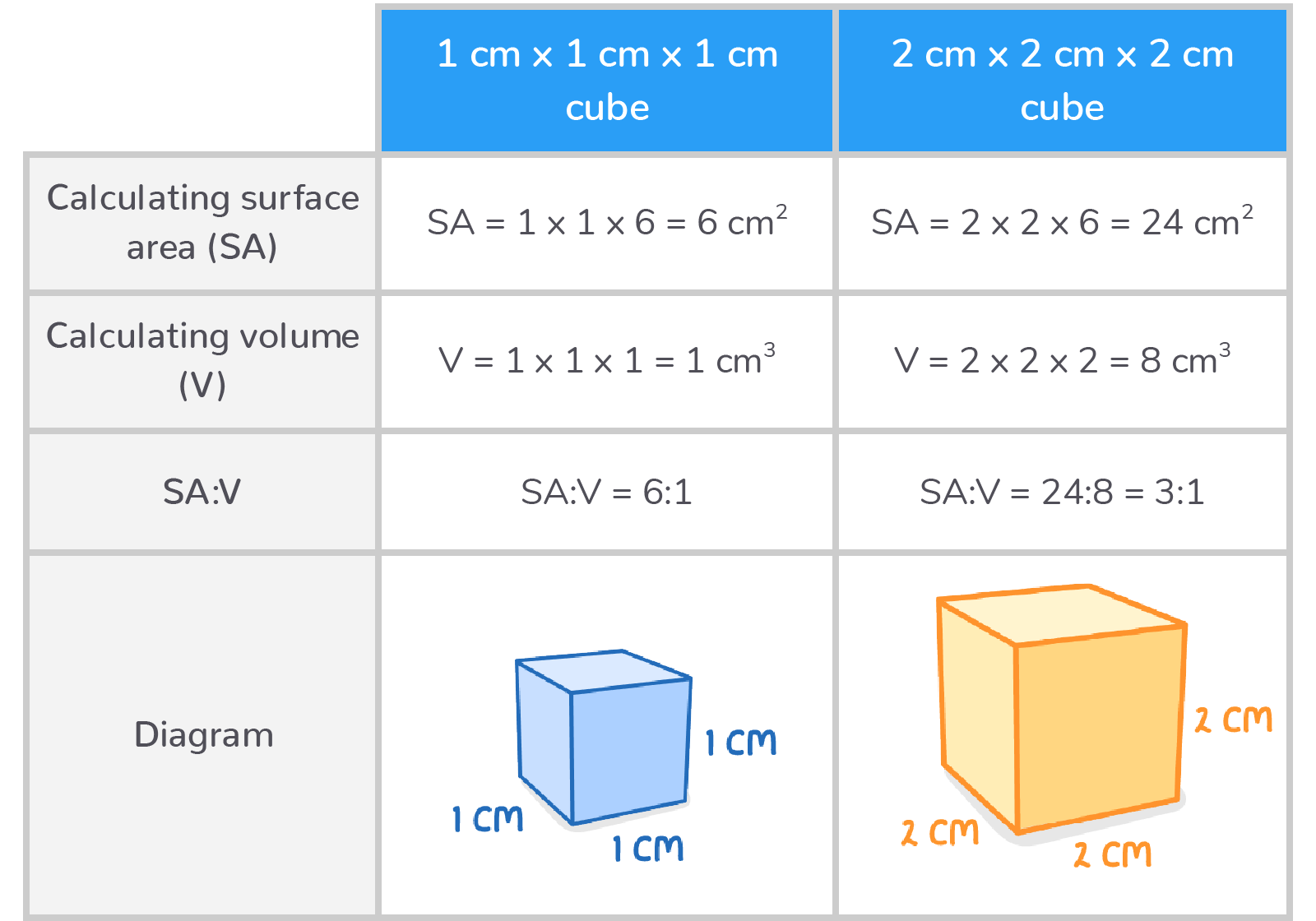Specialised Exchange Surfaces
This lesson covers:
- How surface area to volume ratio affects exchange
- Why multicellular organisms need specialised exchange surfaces
- The key features of specialised exchange surfaces
Organisms need exchange Living organisms need to exchange materials like oxygen, glucose, excretory products like urea, and heat with their environment. This exchange occurs across plasma membranes. |
Surface area to volume ratio affects exchange The rate at which substances diffuse across an organism's outer surface depends on its surface area to volume ratio (SA:V). How SA:V affects rate of diffusion:
Generally, smaller organisms have a higher SA:V while larger organisms have a lower SA:V. |
Calculating the surface area to volume ratio of a cube  To calculate the surface area (SA) of a cube: SA = length x width x 6 To calculate the volume (V) of a cube: V = length x width x depth |
Multicellular organisms require specialised surfaces In single-celled organisms, substances diffuse directly across the cell membrane. This cannot happen in multicellular organisms because:
To solve this problem, multicellular organisms have evolved specialised exchange surfaces. |
Key features of specialised exchange surfaces Exchange surfaces are specialised structures that allow materials to be transferred between cells and an organism’s surrounding environment. They have several features that help them to increase the rate of diffusion of materials. These features include:
|